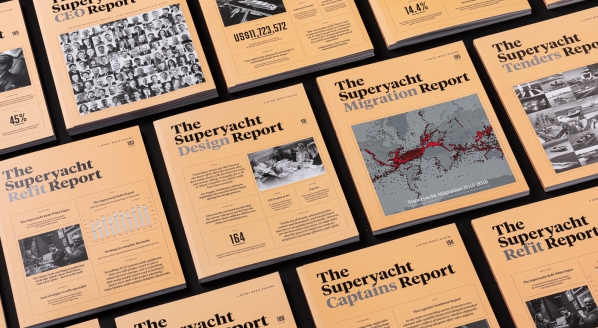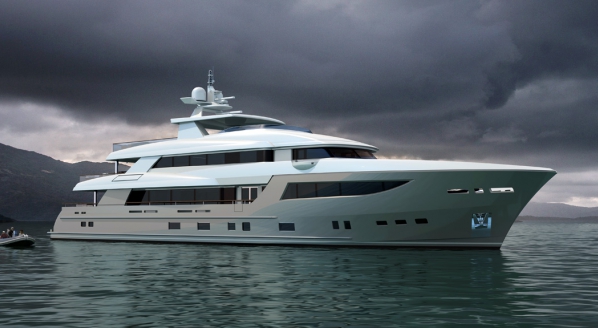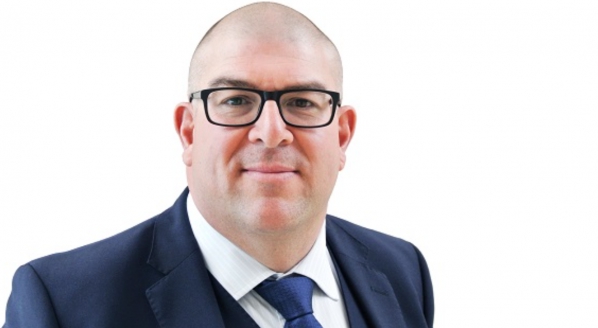Check yourself…before you wreck yourself
Some of the London’s major players explore how the insurance market has changed and continues to change…
When one mentions the word ‘insurance’ in company, the response is often a collective groan. Indeed, even among its own fraternity, it’s not uncommon to hear phrases such as an ‘unnecessary evil’ used to describe insurance as a practice. However, anyone who has ever required their insurance will tell you that this so-called ‘unnecessary evil’ quickly becomes very necessary in the event of an incident. London, as well as being home to myriad superyacht enterprises from shipyards to law firms, is also the most prominent location for the insurance community.
“London is not only the world leader for superyacht insurance, but [also] the world leader for insurance in general,” says John Macaulay, yacht global product lead for MS Amlin, the specialist insurer focused on superyachts with a value in excess of €10 million. “This has largely, of course, been driven by the presence of Lloyd’s [of London]. But London, driven by Lloyd’s, has had its own specific problems.”
Over the past five years in particular, the insurance market has suffered from a period of excess capacity which has had the effect of drastically driving down the cost of premiums. However, it’s important to note that this phenomenon hasn’t been restricted to the yacht market, nor indeed even to the marine market. Nevertheless, the wider marine market, and the superyacht market specifically, have been greatly affected. The excess capacity was caused in large part by new entrants to the yacht market that had previously focused on commercial tonnage.
"This influx of new capacity added competition and drove down prices.”
“A lot of the problem was caused by businesses from the Lloyd’s market writing hull insurance moving into yachts,” explains Matt Halpin, senior underwriter at Lead Yacht. “They had been losing money for years with the commercial tonnage. This influx of new capacity added competition and drove down prices.”
It speaks volumes for its perceived stability that commercial tonnage insurers were so attracted to the superyacht market. While those within the industry experienced the fall in year-on-year delivery figures and number of active shipyards, the market has still continued to grow by at least 147 vessels a year since 2008 – a remarkable figure in light of the global recession.
While the race to the bottom for premium costs was caused by the influx of capacity, the situation was worsened further by subsequent factors. “Because of the downward spiral in price, brokers were given a lot of commission which they were further rebating to the client in order to push the premium price even lower,” says Halpin. “What we have found in recent months, now that the rates have started increasing, is that gap in the premiums has become even bigger because broker commissions have fallen and they are no longer able to rebate as much to the client because they have less to give away.”
"...there has been a number of substantial superyacht losses, especially over the past five years..."
Paul Miller, director of marine underwriting at Hiscox MGA, adds, “Recently, there has been a number of substantial superyacht losses, especially over the past five years, and when you add them to the regular year-on-year losses, the market couldn’t sustain the payouts and has been losing money. When the HIM [hurricanes Irma and Maria] losses occurred in 2017, that was the real trigger for change, and since then the market has changed rapidly.”
Since those losses, the market for marine insurance – of which superyachts form only a small part – has shrunk dramatically, with many businesses pulling out of marine across the board and many others cutting their losses on the superyacht market. As a result, there is now less capacity and competition, and prices are beginning to increase towards a more sustainable market position.
While the impact on superyacht premiums has been the most widely reported element concerning the ongoing correction, there has also been a change to broker commissions, coverage and deductibles. This correction has been all-encompassing as underwriters move to bring their businesses into more sustainable positions.
“When the market was soft, there was more coverage within the wording of each policy,” says Macaulay. “Ordinarily, when the market is harder, you might not provide coverage for additional losses such as cash on board. However, when competition for [underwriting] business is so severe, and it becomes hard to continue lowering premiums, you may include various other elements of cover to enhance the attractiveness of the policy to the client – without charging for it.”
As well as including additional coverage, insurers had also been reducing deductibles. Much like the excess you might associate with car insurance, deductibles refer to the financial liability assumed by the owner of the superyacht. For example, if the owner had a €250,000 deductible on their policy, that is the amount they would be expected to pay in the event of an incident, with the rest covered by the insurer. In light of the market correction, deductibles will also be increasing in addition to premiums.
Therefore, the superyacht market is at the critical stage where stakeholders need to understand why the changes are happening and how. After all, why should the premium increase for a superyacht owner who has no previous history of incidents or claims? Quite simply, if the market correction hadn’t begun – and we can expect premiums to keep rising as well as continued changes to coverage, commissions and deductibles – the market would have become so unsustainable that coverage for superyachts from premium insurers would no longer be available. Invariably, there would be new entrants to the market, but with a lack of genuine competition they would be under no obligation to continue the trend of unsustainably low premiums and favourable conditions.
“There has been a lot of resistance [to the correction] to begin with, certainly there was in the last quarter of 2017,” adds Miller. “There was a lot of resistance initially because there were still a lot of businesses out there that were continuing to write low premiums. How- ever, we started to see a change in attitude in 2018 and things started to change far more rapidly. From a London perspective, when Lloyd’s began to delve much deeper into the performance of certain lines of business and identify the underperforming lines, yachts were highlighted as one of them.
“In the coming years we can expect premiums to continue rising."
“In the coming years we can expect premiums to continue rising. The increases may not be as harsh as they were this year but I would expect them to continue at a rate that is dependent on how rapidly the market shrinks.”
And it is not just the insurance market itself that is changing. Indeed, superyachts and the way they are being used are also evolving – something that poses new challenges for insurers. It’s no secret that superyachts are becoming increasingly large and complex, and as owners and charter guests, supported by their industry advisors, begin to look further afield for ever more imaginative and remote destinations, the business of insuring these vessels will become increasingly complicated.
“We’ve had clients wanting to take high-tech carbon composite yachts to remote destinations where there aren’t the necessary facilities to fix the vessel for thousands of miles,” says Miller. “It is not just about the vessel itself; it is about regional infrastructure and the ability to respond in case of an incident. As a result, if clients want to explore these places, they are going to have to carry a portion of the risk themselves. At present, however, there aren’t enough truly adventurous vessels currently in operation. There are a number of such projects in build, though, and my fear is that they may not necessarily have properly thought through the implications of insuring such a vessel.”
So does the wider superyacht community have a greater responsibility to owners to explain the realities of operating such a vessel? It’s all well and good selling the dream, but dreams are fictitious and superyachts are very real. “We are going to be asking, ‘What protection does the boat have?’. ‘Is it ice class?’. ‘Has it been strengthened along the waterline in order to deal with ice?’,” explains Miller. “What we are finding is that, half the time, nothing has been done to this effect and this is going to cause issues with superyacht owners that have been sold on the idea of traversing the Northwest Passage.”
Whenever the insurance market for superyachts is discussed, there’s almost an automatic tendency to focus on movements associated with hull insurance. In a way, P&I coverage that relates to everything from wreck removal, pollution, collision, crew welfare and general third-party liabilities is more vital than hull insurance because any vessel over 300gt must have P&I cover if it wishes to operate whereas, theoretically, an owner could risk a voyage without hull cover.
“The Yacht P&I market is going through a correction but to a lesser extent than what is presently being seen or anticipated in the more traditional P&I market,” says Fergus Draper, head of yacht P&I at Skuld. “Recent losses or events in both the yacht hull and yacht P&I arena are having a significant effect not only on yacht hull rating (and risk appetite) but to a lesser extent P&I but the evidence is there that rates are increasing.”
According to Draper, the average annual P&I premium is around $10,000 for 24m-plus superyachts. As a result, the margins are far smaller where price competition is concerned. For example, a 20 per cent drop in price may save the owner $2,000 over the course of the year which, by any measure, is a nominal sum for a superyacht operation.
“Over the past year, we have seen an increase in claims activity..."
“Over the past year, we have seen an increase in claims activity and there appears to be a (yacht) market- wide acceptance that premiums need to be adjusted to reflect the negative performance. Yacht P&I when compared to more traditional marine P&I has always been rated to reflect a more passive risk; some of that we have seen from a hull and P&I perspective are changing that mindset. The scale of financial exposure is being realised in a manner not previously or historically thought possible, or perhaps the best way of phrasing this is to say that we always assume that there will be claims of a certain value but the frequency is far higher than previously modelled,” comments Draper.
“There is still undercutting and competition but it has been less fierce than in the hull world. But why wouldn’t a superyacht owner pay the extra $2,000 for the quality of security afforded by the clubs and cover that is accepted in every port in the world? In the last 12 months, we have increased our premiums across the board, and it was not only accepted by the brokers and managers – they agreed with it. They had all long felt that the P&I rates had been far too cheap.”
However, that is not to say that P&I does not have its challenges, and chief among these is the growing size and complexity of superyachts and the relatively sluggish progress where crew training, proficiency and retention is concerned.
“There is still of course a market into which to place yacht P&I but the individual risk scrutinisation process is deeper than before,” explains Draper. “With the global yacht fleet expanding and with larger vessels containing upwards of 100 crew on board, one of the industry issues is that there is clearly not enough suitable crew for these vessels leading to increased liability exposure for owners and their insurers,” Draper explains.
The issue is this: where does the responsibility lie to improve the proficiency of superyacht crew? Draper recalls a meeting at a helicopter operational safety conference where he and his team spoke to a manager and asked him, “What are you doing to reduce the risk of accidents?”, to which the manager responded, “What are you doing about it?”
On the one hand, you could argue that insurers have a responsibility to stop insuring any vessel they believe to be unsafe – especially when it concerns the operation of helicopters. But where one insurer refuses, there will always be another willing to take on the risk. On the other hand, it should be the business of the management company to make sure that minimum standards are exceeded, not just adhered to. Indeed, Draper estimates that around 95 per cent of P&I claims are the result of human error.
The superyacht insurance market is in the midst of a period of change. For a number of years, both hull and P&I premiums have continued to shrink towards unsustainable low levels. For many insurance brokers, as well as many superyacht owners, the coming years will be the first time that they have had to contend with rising premiums and a hardening market. Therefore, it’s imperative that the various industry stakeholders understand that without this correction there would be ever fewer quality insurers willing to cover superyachts. As a market, the industry has tended to overstate the risks associated with rising costs.
There was outrage when superyacht owners were made to pay VAT on fuel in France, with many believing they would simply stop visiting the country – yet those fears were unfounded. Given the overall cost of building and operating a superyacht, insurance – whether it has increased or not – is not so expensive that it would deter an owner from purchasing or using a superyacht. That said, it doesn’t mean they will not require a full and accurate explanation of why this particular cost is rising!
This article originally appeared in issue 199 of The Superyacht Report. For complimentary access to issues 175-200 of The Superyacht Report, click here.
Profile links
NEW: Sign up for SuperyachtNewsweek!
Get the latest weekly news, in-depth reports, intelligence, and strategic insights, delivered directly from The Superyacht Group's editors and market analysts.
Stay at the forefront of the superyacht industry with SuperyachtNewsweek
Click here to become part of The Superyacht Group community, and join us in our mission to make this industry accessible to all, and prosperous for the long-term. We are offering access to the superyacht industry’s most comprehensive and longstanding archive of business-critical information, as well as a comprehensive, real-time superyacht fleet database, for just £10 per month, because we are One Industry with One Mission. Sign up here.
Related news

Unfettered access for all
The Superyacht Report and SuperyachtNews Premium are now free to access throughout the COVID-19 crisis
Business
A catalyst for creativity
Remote working seems to be a method which some designers are taking in their stride, and seeing the positive effects
Fleet

Exploring the OBAC build contract
Tim Charles, owner of Crescent Custom Yachts, outlines the Open Book At Cost build method
Business

A legitimate alternative
We consider what distinguishes the Pantaenius insurance model from the London market
Business

No bubble to burst
How might COVID-19 compare to the Global Financial Crisis? Will Christie considers the market's preparedness
Business
Related news
Unfettered access for all
6 years ago
A catalyst for creativity
6 years ago
Exploring the OBAC build contract
6 years ago
A legitimate alternative
6 years ago
No bubble to burst
6 years ago
NEW: Sign up for
SuperyachtNewsweek!
Get the latest weekly news, in-depth reports, intelligence, and strategic insights, delivered directly from The Superyacht Group's editors and market analysts.
Stay at the forefront of the superyacht industry with SuperyachtNewsweek




